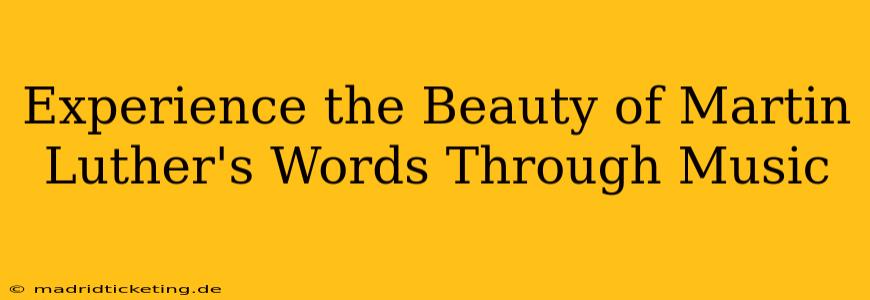Martin Luther, a name synonymous with the Protestant Reformation, left an indelible mark on religious history. But his influence extends far beyond theological debates; his profound words inspired a wealth of musical compositions that continue to resonate with audiences centuries later. This exploration delves into the fascinating intersection of Luther's writings and the music they spawned, highlighting the enduring power of his legacy through the lens of melody and harmony.
What inspired Martin Luther to write hymns?
Luther's hymn writing was intrinsically linked to his theological convictions and his desire to make religious teachings accessible to the common people. He believed strongly in the power of congregational singing, viewing it as a vital component of worship and a means of spreading his reformist ideas. Latin chants, prevalent in the Catholic Church, were largely inaccessible to the laity. Luther aimed to create hymns in the vernacular German language, enabling everyone to participate actively in praising God. This accessibility played a crucial role in disseminating his theological messages and fostering a more participatory form of worship. His deep faith and his experiences of spiritual struggle formed the emotional core of many of his hymns, giving them an authenticity and immediacy that continues to captivate listeners.
What are some of the most famous hymns written based on Martin Luther's words?
Several of Luther's hymns have achieved iconic status, transcending geographical and cultural boundaries. "A Mighty Fortress Is Our God" ("Ein feste Burg ist unser Gott"), perhaps his most famous hymn, stands as a powerful testament to faith amidst adversity. Its strong melody and unwavering message have made it a symbol of resilience and hope for countless generations. Other notable examples include "From Heaven Above to Earth I Come" ("Vom Himmel hoch da komm ich her"), a tender Christmas carol, and "Now Thank We All Our God" ("Nun danket alle Gott"), a hymn of gratitude expressing thankfulness for God's blessings. These hymns showcase Luther's lyrical talent and his ability to articulate complex theological concepts in simple, memorable language. The enduring popularity of these hymns speaks to their universal appeal and their continued ability to resonate with believers of all backgrounds.
How did Luther's hymns contribute to the Reformation?
Luther's hymns proved to be surprisingly effective tools in spreading the Reformation's message. By crafting hymns in German, he bypassed the barrier of Latin, allowing ordinary people to engage with the core tenets of his theology. These simple yet powerful songs became vital instruments of protest and reform, spreading rapidly across communities. The memorable melodies and relatable lyrics helped to solidify and disseminate his ideas in a manner far more effective than traditional theological treatises. Singing these hymns became a form of active participation in the Reformation, strengthening the sense of community among its adherents. The emotional power of music amplified the intellectual arguments, creating a deeply personal and memorable experience for believers.
Are Luther's hymns still sung today?
Absolutely! The hymns penned by Martin Luther remain remarkably relevant and widely sung today, both within Protestant denominations and beyond. Their timeless themes of faith, hope, and perseverance continue to resonate with modern audiences. The melodies are often familiar even to those who may not be actively religious, highlighting the enduring power of these musical compositions. Their continued popularity across centuries and cultures speaks volumes about the universal appeal of their messages and the enduring legacy of Luther’s contribution to both religious thought and musical expression. They frequently feature in church services, concert programs, and even secular settings, underscoring their lasting impact on musical culture and spirituality.
What is the musical style of Luther's hymns?
The musical style of Luther's hymns reflects the prevailing musical landscape of his time, incorporating elements of both medieval and Renaissance traditions. However, they are characterized by a relative simplicity and accessibility, aiming to be easily learned and sung by a wide range of people. They generally feature straightforward melodies, often in major keys, that are both memorable and emotionally evocative. The harmonies are frequently diatonic, utilizing the natural tones of the scale to create a sense of both stability and emotional resonance. While grounded in these traditional elements, Luther's hymns exhibit a unique simplicity and directness, reflecting his goal of communicating powerful theological concepts in a clear and accessible manner. This intentional simplicity is one of the factors contributing to their enduring appeal and singability.
The legacy of Martin Luther extends far beyond his theological writings. His hymns, born from a desire to share his faith with the world, continue to inspire and uplift listeners. The timeless beauty of his words, set to memorable music, serves as a powerful reminder of the enduring power of faith and the transformative influence of music. These hymns remain vital expressions of faith, reflecting the ongoing relevance of Luther's message to modern audiences.

